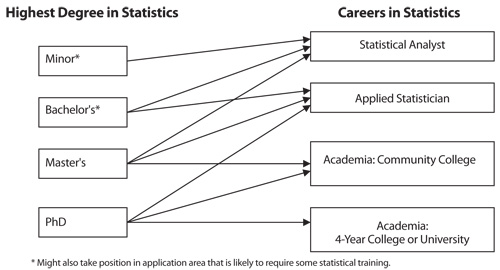 Gerald (Gerry) Hahn is a retired manager of statistics at the (current) GE Global Research Center, where he worked for 46 years. He is a co-author of four books and many articles, recipient of numerous awards, and Fellow of the ASA and American Society for Quality. He holds a doctorate from Rensselaer Polytechnic Institute.
Gerald (Gerry) Hahn is a retired manager of statistics at the (current) GE Global Research Center, where he worked for 46 years. He is a co-author of four books and many articles, recipient of numerous awards, and Fellow of the ASA and American Society for Quality. He holds a doctorate from Rensselaer Polytechnic Institute.
 Necip Doganaksoy is a principal technologist at the GE Global Research Center and an adjunct professor at the Union Graduate College School of Management in Schenectady, New York. He is a co-author of two books and a Fellow of the ASA and American Society for Quality. He holds a doctorate from Union College.
Necip Doganaksoy is a principal technologist at the GE Global Research Center and an adjunct professor at the Union Graduate College School of Management in Schenectady, New York. He is a co-author of two books and a Fellow of the ASA and American Society for Quality. He holds a doctorate from Union College.
The world is full of exciting professional opportunities for statisticians. In this article, we describe some popular career paths for those with training in statistics.
Some Roles
We briefly differentiate among five general roles statisticians (outside of academia) may assume during the course of their careers within the field. This categorization is somewhat arbitrary; there is no clear delineation, as individuals move from one role to the next.
Statistical Analyst. Statistical analysts typically conduct data analyses, under the supervision of an applied or senior statistician or a knowledgeable practitioner, who might also serve as a mentor and role model. Over time, many statistical analysts strive to move from principally “backroom” positions to taking on increasingly more responsibility, conducting more advanced technical tasks, and working more independently.
Applied Statistician. Applied statisticians bear primary responsibility for everything from helping ensure the right data are collected to analyzing the data (or directing such analyses) and reporting the findings. They interact closely with other technical staff and management and, ideally, are integral members of the project team.
Senior Statistician. Senior statisticians, in addition to taking on the roles of applied statisticians, also assume broader responsibilities. They look at problems holistically and strive to relate them to the general goals of the organization. Senior statisticians play a proactive role in proposing new projects and ventures that will benefit their organizations or customers in the future. They are often deeply involved in the early stages of a project, helping define a problem quantitatively and suggesting the path forward to senior management. Later, they participate in putting together and presenting the findings. They are often considered the ultimate source of knowledge and wisdom in statistical matters.
Statistical Manager. Managers of statistical groups are involved in securing projects—especially for the junior members of the group—and helping define what is to be accomplished. They select the person(s) to do the work, provide guidance as needed, and assume overall responsibility for success. They also keep upper management informed of the group’s technical accomplishments, help foster the interests and aspirations of the group members, and develop a vision for the future. Their administrative responsibilities include staff recruitment and development and performance evaluations. The number of such positions is limited.
Private Statistical Consultant. Some applied statisticians eventually go into business on their own as private statistical consultants. Consultants undertake special projects, often for organizations that do not have their own statistician, or review the work of practitioners or other statisticians. A frequent use of statistical consultants is in addressing legal issues, possibly as expert witnesses.
Entry-Level Positions
Figure 1 shows likely entry-level roles in statistics for those with training at levels ranging from a minor to a PhD degree in statistics.
Subsequent Career Paths
A wealth of opportunities presents itself for those with some experience in entry-level positions. We focus on opportunities for applied statisticians (some of whom may, at some time, switch to academia). The path for those within academia tends to be centered on the tenure promotion process.
Many applied statisticians advance within the field and aspire to take on increasingly greater technically focused roles and responsibilities, perhaps culminating their careers as senior statisticians and their organization’s recognized statistical guru, or possibly moving into academia. Others, and especially those with relevant past training, may—often with additional training—move into an application area, such as epidemiology, market research analysis, quality or reliability engineering, or risk analysis. Yet others might leverage their backgrounds in statistics to secure a job in management in an application area.
Some frequently traveled career paths are shown in Figure 2.
Your Career Path
Your career path might be a gradual one, or it might involve formal job changes. It is often an outgrowth of your involvement in one or more projects, as well as your past training. For example, following up your work in developing a credit scoring system, and leveraging your past training in business administration, you might be asked to oversee the system’s implementation. Over time, your work becomes more and more applications oriented and less focused on the statistical aspects. This evolution may eventually be reflected by a change in your formal job title. You might, nevertheless, continue to be regarded as a statistical expert and to act, on occasion, in that capacity.
Your career path is clearly affected by circumstances and even chance events. Nevertheless, it should be principally based on your abilities and choices. It is important for you to define your career goals early—even though you will undoubtedly modify and expand them over time.
So what should your career path be? The answer will depend heavily on your personal aspirations and skills and on how you prioritize different criteria for success. Your career should lead not only to fame and fortune, but also to a high degree of job satisfaction.
Fortune is the easiest to quantify since it can be measured by your paycheck and other tangible job benefits.
Your fame as an applied statistician is reflected by your reputation as an effective on-the-job contributor and leader, and more quantitatively by such things as your publications record, the offices to which you have been elected, and the honors bestowed upon you (e.g., fellowship in the ASA). Your reputation could be national or even international, as those of such (one-time) statisticians as Albert Bowker, Ed Deming, Lawrence Garfinkel, and Jim Goodnight.
Job satisfaction is more personal and the hardest to quantify. You might seek a high level of predictability and stability in your job (perhaps leading you to eventually seek a tenured position in academia), or you may thrive on change. Many applied statisticians gain great satisfaction in successfully addressing real-life challenges and in the variety of their work and contributions. Some enjoy solving tough technical problems. Yet others want their work to be beneficial to society.
The beauty of our field is that it can accommodate a great variety of aspirations and provide career paths with the potential of satisfying all these criteria.






Thanks for this post. I am a graduate of Bachelor in Applied Statistics and worked for 7 years in Research companies as Data Processor. Currently, I am working in the Quality Management in a healthcare institution.
I would like to ask you advice on how I can improve my skills in statistics. I would like to know more about statistics and be confident in doing data analysis.
Hope you can help me.
Thank you.
Hi Joann:
That’s quite a question. One can, in fact, write books in response–and we have tried to do so. We recommend, in all due modesty, that you look over The Role of Statistics in Business and Industry and A Career in Statistics: Beyond the Numbers (published by Wiley in 2008 and 2011, respectively). These books also provide many further references. In addition, do continue reading the Amstat News and the STATtr@k postings for further hints to success, and consider attending local and national statistical meetings.
To provide you, a few key ideas as starters we propose that–in addition to the preceding and taking advanced courses to strengthen your knowledge base–you recognize the importance of
• Digging to understand fully the problems presented to you and their business implications (and not just their statistical aspects),
• Thinking proactively and appreciating the inevitability of change,
• Communicating effectively to practitioners and management and listening carefully,
• Being a team player, and
• Getting the right data up front.
We hope this gives you a start.
Best wishes.
Gerry Hahn and Necip Doganaksoy
hi i am a BSc holder in Mathematics and now want to study satistics in MSc.am require to write a good study plan.i need to guides please
This was an excellent article. I am an undergraduate in statistics at a research university, and the departments’ basic message is if you are not going for a minimum of a masters degree with a focus on becoming an academic, do not bother as you will never get a job. That conclusion differs from one SIAM non-academica employment survey. While the article sends an encouraging message to undergraduates not seeking a masters or phd, the internship listing in the magazine issue sends a different message – all the internships are for graduate students, typically with a masters or higher. Again, thanks for a good article.
Great article…Well defined..
Hi,
This is a really good post for people like me. I have been working for almost 7yrs,4.5yrs of which as an analyst. I am a life-sciences degree holder. I am very keen on pursuing a masters in biostatistics.
However, when I enquire, people’s responses mostly revolve around the fact that I do not have any exposure to ststs at my undergraduate level, which is absolutely true. Most of my exposure to stats is from my work experience.
So here is my question: I have a fairly good grasp over statistical concepts (may not be the same case with maths) and have got extensive training in SAS and R. Will I be able to think in statistical terms when I am pursuing the masters(if I get through one) and will I be able to do so in my future professional life?
I ask this as I could very well do a statistics masters through one of those fancy distance learning programs. But I like to get some insight as to how hard this subject is for an average person to grasp and apply in his future life.
Thanks in advance!!
Hi Raam, did you ever get a sense for the level of difficulty of the subject for the ‘average’ person, and did you pursue it?
Hi, i am currently a undergraduate student in statistics. I have an economics minor plan in me right now, and as my university offers BS in stats, so i am going to take some industrial engineering electives. Is this a good move? I am interested in spending my career either in bank industry doing modelling or in manufacturing engineering industry.
Hello Prof.Hahn, and Prof.Doganaksoy
Thank you for the insightful article , it has given me a hope , and helped me to see vividly the correlation between the fields of Statistics .
Indeed , I reached a point that I have to choose a specific path in statistics. however I find that is challenging ,and I need more data to assist me to do so .
I want to build a career as professional statistician ( this is my first basic target ) ,to gather the maximum application knowledge of statistics in real world ,than evolving that knowledge to the stage of research ( second target by doing Phd in applied Stat) .
The problem is ,the educational organizations concentrate on either forming the student professionally or in a research path ,but not simultaneously . Thus ,I have to study professional program to be applied statistician ,then starting over again to study a research program in applied statisitss .
Please , can you advise me with better ideas , I need more information about how to be professional applied statistician at first stage than a researcher in applied statistics, with reasonable time frame and related paths.
Thank you very much .
Lynda
hi,
I am a graduate from statistic background. Just planning to be a analyst with no job experience. can you please guide me
Regards,
jaison
I’ve been working with spatial data since graduation in 2007 and obtained my MS in Applied Statistics in 2013. I still don’t know if I want to continue my current job and was curious what else is out there. I read what you wrote above and curious what a day to day job for a data analyst would be and average wage.
Hi
i am still a student studying a course in applied statistics with computing,but i feel not satisfied with how we are thought as far as applications are concerned.The teaching we are offered is more of theoritic and that is the reason am worried about.Would I realky find an applications centre for my course with a lot of theory in me?How will i improve my statistical skills and which are the appropriate application areas,especially in African states?,,,,,,otherwise thank you for the post
Thanks for the posts, they are really helpful. Am still confused a little bit, did a bachelor degree in business statistics but still wondering what to do at masters or what to take as a career. Your advice will really be appreciated
Sharon
I see recently from 2015 onwards applied statistics has gained importance in analysing digital data ( in High volumes in Terra bytes ) for various real world situations like finance , Consumers preferences , Market research, Industrial productivity, which commodity is selling more . The best example I can quote is How google is analysing its data in recent years you can see that happening. Llinkedin also you can see . A common user in linkedin can say statistical figures of activities around his personal profile. It is evolving exponentially. I am an Instrumentation engineer studying applied statistics and I believe it is useful in predictive analysis. I admit how they do that but I am still learning the ropes. Even I am a novice in this field. I am also exploring How applied statistics can be useful as an Instrumentation engineer.
I should admit that I am a beginner in this field. Correct me if I am wrong.
I am a graduate of Bsc statistics at University of Dodoma in Tanzania. it’s my pleasure if i can get a mentor who will lead me in my career growth as of now am working as banker and doing something different from statistics so i think my statistics career will going to fade up.But I am passionate even to do masters for it but no direction at all due to time i have in my current job .Your advice will save the need.
ASA has several mentoring programs. See if any of these work for you: http://magazine.amstat.org/blog/2016/09/01/mentoring-programs/
If not, you can also join the ASA community and find a member to help you answer some of your questions http://community.amstat.org/home
Good luck!
what does applied statistics with computing deal with?
During the Joint Statistical Meetings in 2011, there was a panel discussion on the topic. The highlights from the discussion should help answer your question: http://stattrak.amstat.org/2012/03/01/applied-statistics
I am the parent of a junior in high school who has interest in statistics major, what resources would you recommend? are ther any externiships he should be pursuing?
WONDERFUL POST
I am a graduate of applied statistics from Maseno University in Kenya. I completed my degree course in 2015.Since then,i have been making applications, visiting offices ,trying my best to secure a job to no avail. It has come to my realization that graduates in statistics are not marketable any more in Kenya.
Hi Joseph,am also a graduate of Maseno University.Graduated the same time as you,with actually the same degree as yours.What you’ve mentioned is very true because finding a job related to applied stats has become difficult.Wish they would just do away with the course,if it doesn’t benefit the graduates.
I’m a student in university of Kabianga pursuing applied statistics with computing and I have realized that statistics is hard and hard to secure a jop because getting even attachment is hard.It is not marketable as some people thought .
I am a student wishing to pursue a course in degree of applied statistics with computing in moi university but still doubting whether this course is good or i better change now,please remember your assistance will be appreciated
I am a graduate of Bsc Applied Statistics with computing from moi university. Currently registered for a CFA course at CFA institute. Kindly advice if am in the right path. Also planning to specialize in Masters Financial Statistics.